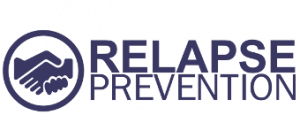1.1 Standard statement
The rights and legal status of the patients/clients are upheld by the treatment Centre within an ethos of patient/client dignity, appropriate treatment provision and respect for human rights.
1.2 Constitutional rights:
The constitutional rights of the patients/clients are upheld and supported by the Centre.
The human rights of people affected by substance use are guaranteed by the Constitution of South Africa in the Bill of Rights and Health Rights Charter. Patients/Clients and their families and caregivers are guaranteed equal rights as specified in the Bill of Rights of the Constitution of the Republic of South Africa.
These rights include the right to the following:
- a) Health care services, including reproductive health. Clause 27(1).
- b) Sufficient food and water. Clause 27 (1).
- c) Social security, including appropriate social assistance if unable to support themselves or their families. Clause 27(l).
- d) Emergency treatment. Clause 27(3).
Specific care is taken to ensure that patients/clients are not deprived of their basic constitutional rights.
This includes the following rights.
- a) The right not to be deprived of freedom arbitrarily or without just cause. Clause 12(1).
- b) The right not to be treated or punished in a cruel, inhumane or degrading way. Clause 12(1).
- c) The right not to be subjected to forced labour (Clause 13) and to unfair labour practices. Clause 23.
- d) The right to bodily and psychological integrity. Clause 12(2).
- e) The right to freedom of religion, belief and opinion. Clause 15.
- f) The right to freedom of expression. Clause 16.
- g) The right to basic education. Clause 29.
- h) The right to equality, and equal protection and benefit before the law. Clause 9 (I).
1.3 Health rights:
The fundamental rights of people who use substances are identical to those of other citizens. These rights include the following rights.:
- a) The right to dignified and humane treatment and care.
- b) The right to have access to treatment services, irrespective of the patients’/clients’ ability to pay.
- c) The right to effective communication in a language and manner that patients/clients understand.
- d) The right to reasonable expectations in terms of the range of services offered and the quality of care provided.
- e) The right to locally available services.
- f) The right to exercise choice and guide treatment through informed consent.
- g) Freedom from discrimination in terms of inequitable access to treatment.
- h) The right to privacy and confidentiality.
- i) The right to appropriate treatment and medication.
- j) The right to protection from psychological, physical and verbal abuse.
- k) The right to adequate information about patients’/clients’ clinical and treatment status and the range and options of treatments available.
- l) The right to prompt assistance, especially in emergency situations.
- m) The right to safe treatment environments and adequate water, sanitation and waste disposal.
- n) The rights to protection from life-threatening diseases.
- o) The right to express opinions and make complaints that will be investigated.
1.4 Rights documents:
Patients’/Clients’ rights and responsibilities are clearly communicated to all patients/clients and their families and caregivers and Centre staff from the onset of the patients’/clients’ entry into the Centre.
Notes and examples: Staff and patients’/clients’ rights and responsibilities should be documented and displayed. These should form part of the patients’/clients’ admission and orientation. Care should be taken to ensure that the rights and responsibilities are communicated in a manner appropriate to the patients’/clients’ (and their families’ and caregivers’) age, language and competencies. Patients/Clients should sign a waiver or contract upon entering the centre to ensure that they have indeed understood what has been explained to them.
1.5 Discrimination:
Treatment facilities seek to ensure that no discrimination occurs on the basis of race, class, gender, ethnicity, colour, age, location, social status, language, sexual orientation, diagnosis, disability, clinical or forensic status in the quality of care and the type of service offered.

